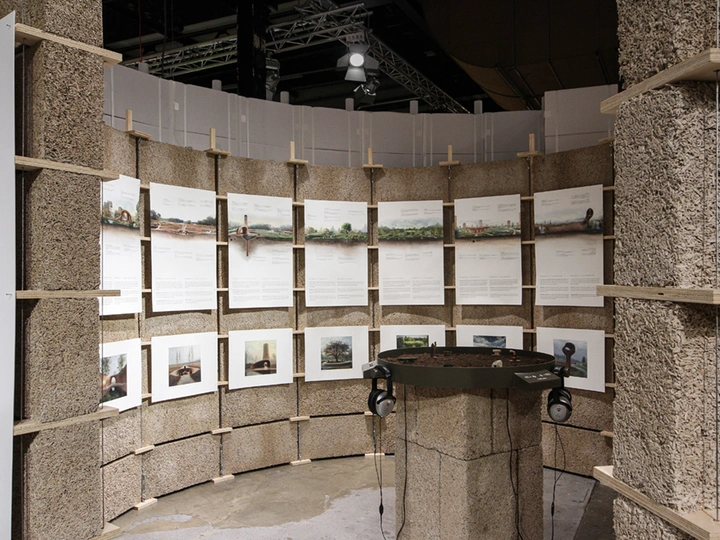Research sustainability within exhibition design

Maarten Kolk (1980) is a researcher, designer and founder of Kolk+. He graduated from Design Academy Eindhoven in 2006. After graduating, he co-founded the studio Kolk & Kusters, which focused on autonomous design, craftsmanship and impermanence. Since 2020, he continues under Kolk+, combining design research with spatial and exhibition design.
In addition to his practice, Maarten has been active in design education since 2016. At the Royal Academy of Art in The Hague (KABK), he works as a lecturer and studio tutor in the Interior Architecture & Furniture Design department. He is committed to community building, safe learning environments and mentoring students in design skills and thinking.
Kolk+ makes (cultural) historical and current societal themes accessible to a broad audience by translating them into layered, tangible design. The studio carries out both small-scale and large-scale projects, from exhibition design to visual identities, with a strong focus on sustainable material use, circularity and modular construction principles.
Exhibition design has a significant ecological impact, especially due to material waste and the short lifespan of temporary exhibitions. In my research, I investigated how designers, museums, and fabricators can collaboratively enhance sustainability. Through a series of in-depth interviews with nine key stakeholders, I identified five main themes influencing sustainability in exhibition production: policy, process, collaboration, aesthetics, and material use. The focus of the study was on temporary exhibitions, where the need and opportunity for circular design principles are greatest.
My research emphasized working with existing building elements, or readymades, minimizing material processing such as gluing, painting, or cutting to support circularity. One of the main challenges uncovered is the lack of scalable, reusable connection solutions that enable modular construction without wasteful one-time use components. This led to the idea for a design-oriented library — a collection of modular building principles and smart ‘dry’ connection methods based on standardized material sizes as they are supplied.
This library will not be a fixed catalog but rather an open framework showing how sustainability and aesthetic quality can coexist in exhibition design. It aims to shift perceptions by demonstrating the potential and variety of circular design beyond the common “eco-look” stigma. By developing adaptable design principles, the library empowers designers to create unique, site-specific exhibitions without reinventing the wheel for every project.
Through building and testing mock-ups, especially focusing on connection details, the project will refine these modular principles to ensure they are both structurally sound and visually appealing. Ultimately, this project seeks to make circular exhibition design more accessible, repeatable, and inspiring for the design community.